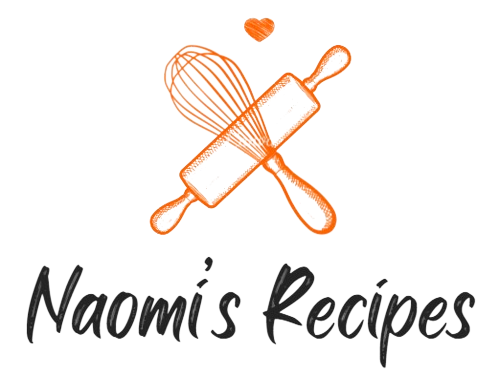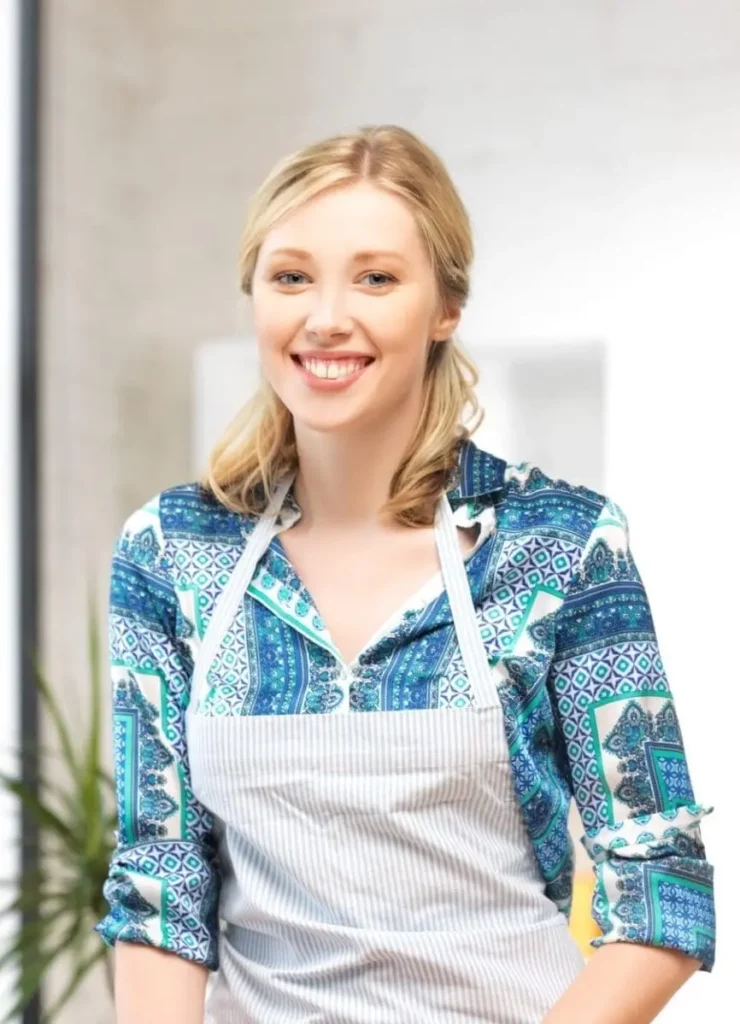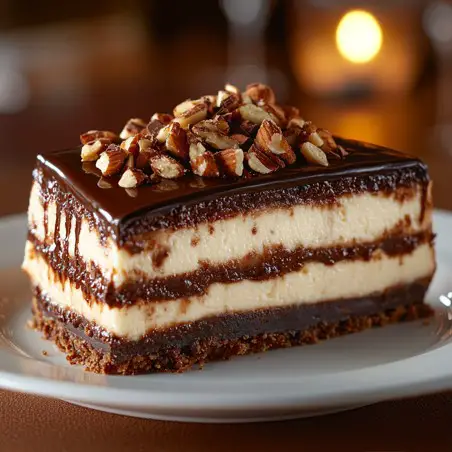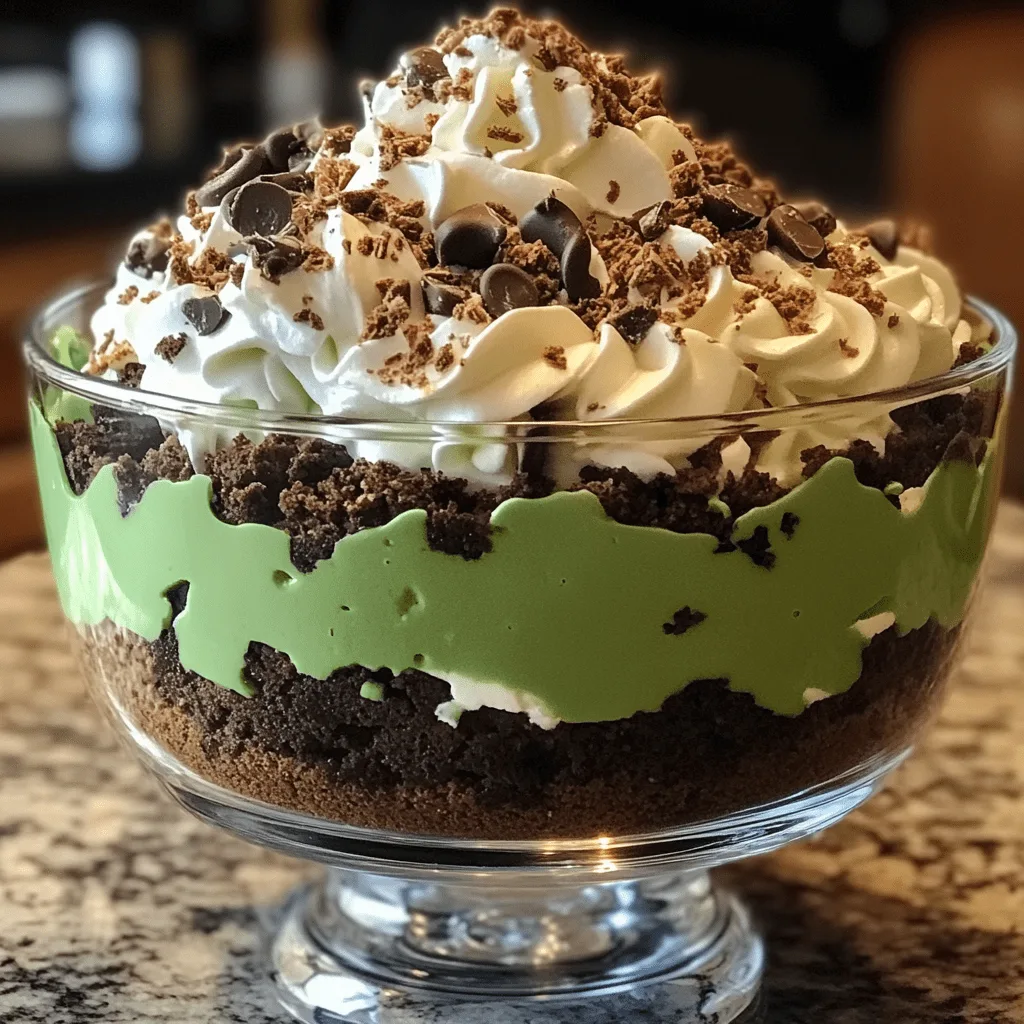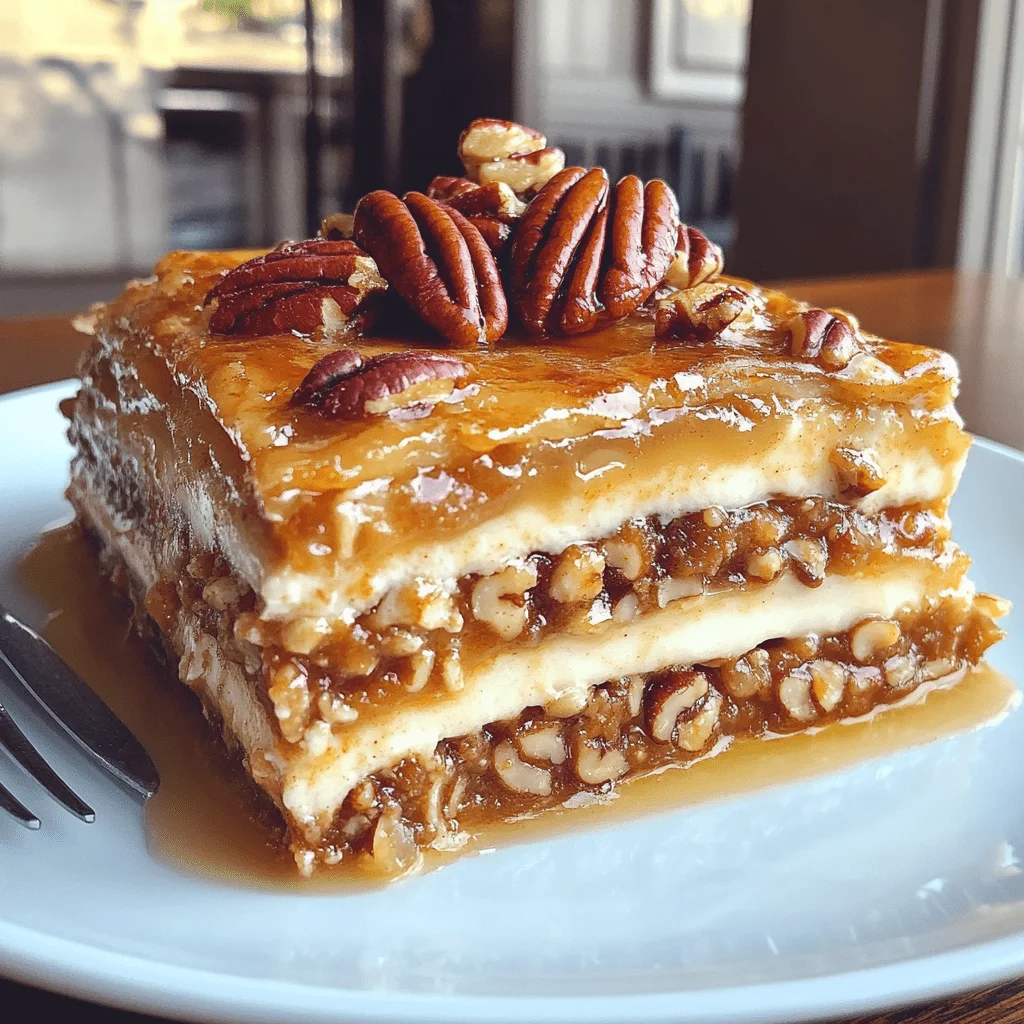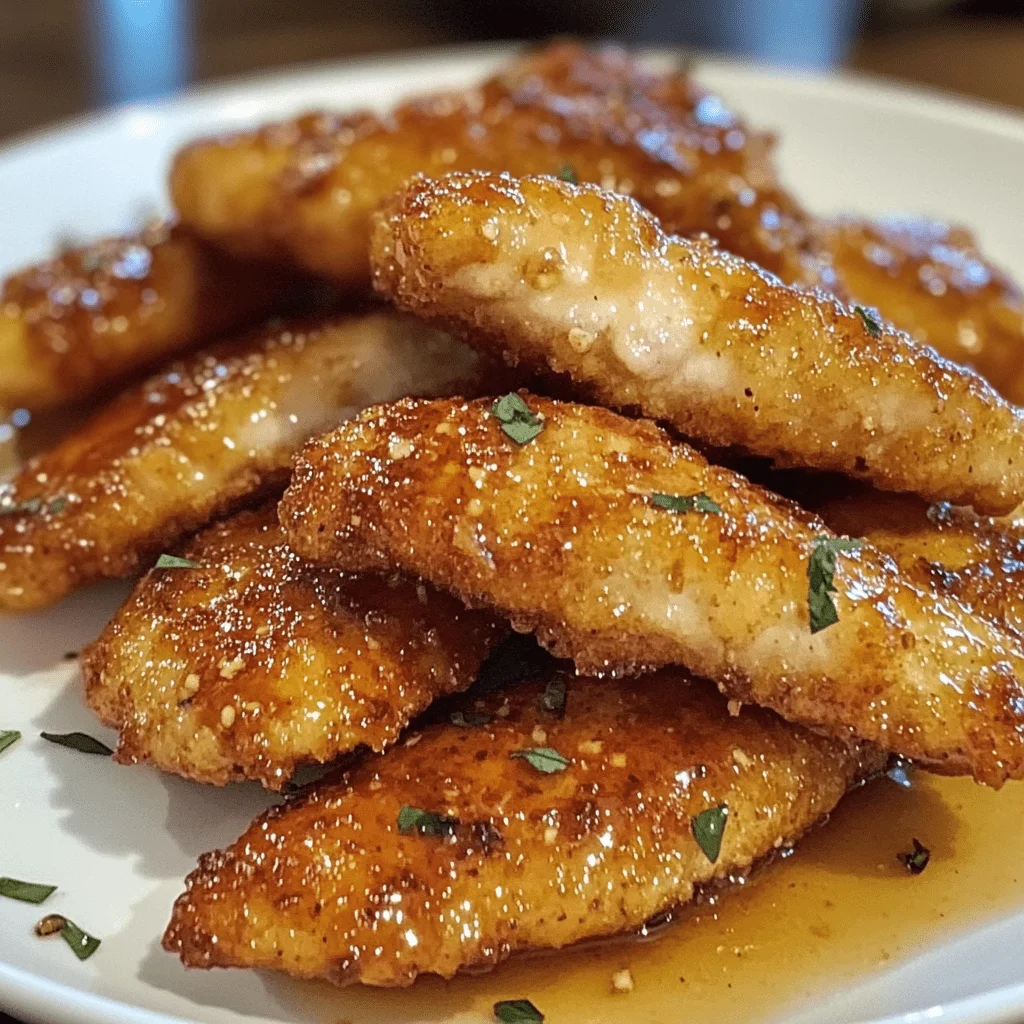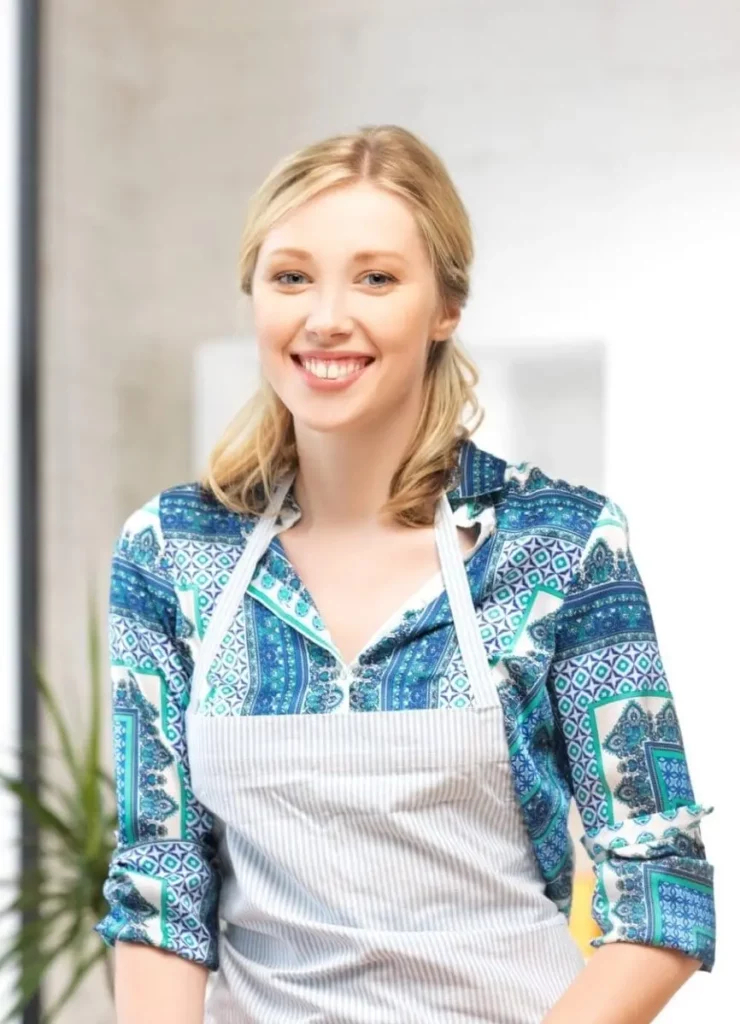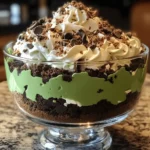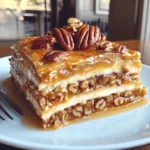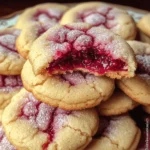Many people assume that German chocolate has origins in Germany, but it’s actually an American creation named after Samuel German, an English-American baker. In 1852, Samuel German developed a type of sweet baking chocolate for the Baker’s Chocolate Company, which was later named “German’s Chocolate” in his honor. This chocolate has a slightly sweeter taste than traditional dark chocolate, making it ideal for baking. The now-iconic German Chocolate Cake, featuring layers of chocolate cake and a coconut-pecan frosting, gained popularity in the U.S. in the 1950s and has remained a favorite ever since.
This cheesecake draws inspiration from that famous cake, combining German chocolate with a rich cheesecake base, all crowned with the signature coconut-pecan topping that fans of the original dessert know and love.
How This Cheesecake Combines Richness and Indulgence
The German Chocolate Cheesecake elevates traditional cheesecake with its decadent layers of flavors and textures. The smooth, creamy cheesecake filling is made with real German chocolate, which adds an extra level of sweetness and depth compared to standard chocolate cheesecakes. What truly sets this dessert apart is the coconut-pecan topping, a key component that adds a chewy, nutty texture and a caramelized richness that perfectly complements the chocolatey base.
The contrast between the silky cheesecake and the crunchy, sweet topping creates a harmonious dessert that satisfies any sweet tooth. The combination of flavors is indulgent without being overly sweet, balancing rich chocolate with tangy cream cheese, buttery pecans, and tropical coconut.
Ideal Occasions for This Dessert
German Chocolate Cheesecake is perfect for any occasion where you want to impress with a show-stopping dessert. Its rich flavors and beautiful presentation make it ideal for:
- Holiday gatherings like Thanksgiving, Christmas, or Easter
- Celebrations such as birthdays, anniversaries, or dinner parties
- Special events like potlucks, office parties, or family get-togethers
Whether you’re hosting a formal dinner or simply want to treat loved ones, this cheesecake is a dessert that commands attention and pleases a crowd.
Overview of Key Components
Highlighting the 3 Main Parts: Crust, Filling, and Coconut-Pecan Topping
This cheesecake is composed of three main parts that each play an important role in creating a balanced, indulgent dessert:
- The Crust – Made from Oreo cookie crumbs and melted butter, the crust serves as a crunchy, chocolatey base that holds up to the creamy filling and adds a complementary richness to the entire dessert.
- The Filling – The creamy filling is where the magic happens. A mixture of cream cheese, sugar, sour cream, and melted German chocolate creates the silky, smooth texture that’s synonymous with cheesecake. The chocolate adds a unique sweetness and depth, distinguishing this dessert from a traditional New York-style cheesecake.
- The Coconut-Pecan Topping – This is the signature element of the dessert, made with toasted pecans, sweetened coconut, and a rich caramel-like sauce made from egg yolks, sugar, and evaporated milk. It provides a contrasting texture and a burst of nutty-sweet flavor that makes the cheesecake truly unforgettable.
Why These Components Work Together to Create the Ultimate Dessert
Each component of the German Chocolate Cheesecake is carefully crafted to bring together a perfect balance of flavors and textures:
- The crust adds a necessary crunch and a dark chocolate flavor that contrasts beautifully with the creamy filling.
- The filling is rich and luxurious, providing the smooth and creamy texture that cheesecakes are known for, with an added depth from the German chocolate.
- The coconut-pecan topping offers a delightful chewiness and crunch that complements the soft filling, while also adding a buttery, caramel-like sweetness from the toasted pecans and coconut.
When layered together, these components create a multi-dimensional dessert where every bite is a balance of creamy, crunchy, sweet, and nutty elements. This harmony makes the German Chocolate Cheesecake an ultimate indulgence for dessert lovers.
Ingredients Breakdown and Preparation
Coconut-Pecan Topping Ingredients
The coconut-pecan topping is a signature feature of German chocolate desserts, adding both texture and flavor to the cheesecake. Each ingredient plays a specific role in creating the topping’s rich, caramel-like consistency and balanced sweetness.
- Egg Yolks:
Egg yolks are essential for thickening the topping. When cooked with sugar and evaporated milk, the proteins in the egg yolks coagulate, transforming the mixture into a smooth, pudding-like consistency that holds the coconut and pecans together. The yolks also contribute to the rich, creamy mouthfeel. - Evaporated Milk:
Evaporated milk adds a creamy texture without being too heavy or rich, as its water content is reduced through evaporation. This concentrated milk helps the topping achieve a luscious, caramel-like consistency, while also binding the other ingredients together. - Vanilla Extract:
Vanilla extract enhances the flavor of the topping by adding a layer of warmth and complexity. It balances the sweetness of the sugar and complements the richness of the egg yolks and butter. - Sugar:
Sugar provides the primary sweetness in the topping and helps caramelize the ingredients as they cook. As it melts and blends with the butter and evaporated milk, the sugar creates the syrupy base that gives the topping its texture and flavor. - Unsalted Butter:
Butter adds richness and smoothness to the topping. The fat in the butter helps blend the ingredients, creating a cohesive, velvety texture. It also enhances the flavor, giving the topping a buttery depth that contrasts with the sweet and nutty elements. - Sweetened Shredded Coconut:
The coconut adds chewiness and a tropical flavor that’s a hallmark of German chocolate desserts. The natural sweetness of the coconut complements the caramelized topping, and its fibrous texture provides a pleasant contrast to the creamy cheesecake filling. - Pecans:
Toasted pecans add crunch and a rich, nutty flavor that deepens the complexity of the topping. Toasting the pecans enhances their natural oils and brings out their earthy sweetness, making them the perfect counterpart to the coconut and the caramelized base.
Crust Ingredients
The crust is the foundation of the cheesecake and plays a crucial role in balancing the creamy filling with a solid, slightly crunchy texture. The use of Oreo crumbs and unsalted butter in this recipe creates a crust that complements the rich chocolatey filling without being overly sweet.
- Oreo Crumbs:
Oreo crumbs are an excellent choice for this chocolate-based cheesecake because they intensify the overall chocolate flavor. Unlike traditional graham cracker crusts, which provide a neutral, slightly sweet base, the Oreo crust adds a deeper, more intense chocolate taste that complements the German chocolate in the filling. The cream in the Oreos also adds an extra layer of richness to the crust. - Unsalted Butter:
Butter acts as the binding agent for the crust, holding the Oreo crumbs together. When melted, the butter blends with the crumbs, allowing the crust to become cohesive and crunchy after baking. The unsalted butter ensures that the crust isn’t overly salty, allowing the chocolate and sweet flavors to shine.
Filling Ingredients
The cheesecake filling is where the richness of the dessert truly shines. Each ingredient is carefully selected to create a creamy, smooth texture while balancing sweetness, tanginess, and chocolate flavor.
- Cream Cheese:
Cream cheese is the base of the filling and provides the signature creamy, tangy flavor that makes cheesecake so irresistible. Its soft texture ensures the filling is smooth and luscious. The mild tanginess of cream cheese helps to balance the sweetness of the chocolate and sugar. - Sugar:
Sugar sweetens the filling and balances the tangy flavor of the cream cheese. It also plays a role in softening the texture, ensuring the cheesecake is smooth and not overly dense. - Flour:
A small amount of all-purpose flour stabilizes the filling and helps prevent cracks during baking. It binds the ingredients together, ensuring the filling sets properly without becoming too firm or dry. - Cocoa Powder:
Cocoa powder enhances the chocolate flavor of the cheesecake, adding depth and complexity. It works in tandem with the melted German chocolate to create a rich, chocolaty base, making the filling more intense than a standard cheesecake. - Sour Cream:
Sour cream softens the texture of the cheesecake and adds a subtle tang that complements the richness of the chocolate and cream cheese. It also helps create a smooth, velvety texture, preventing the filling from being too dense. - Vanilla Extract:
Vanilla extract adds warmth and depth to the filling. It complements the chocolate and enhances the overall flavor profile of the cheesecake, making it more well-rounded. - German Chocolate:
German chocolate is the star of the filling. This chocolate is slightly sweeter and milder than dark chocolate, providing a perfect balance of sweetness without being overwhelming. Its higher sugar content makes the cheesecake filling smooth and rich, contributing to the overall indulgence of the dessert. - Eggs:
Eggs are crucial for binding the filling and giving the cheesecake its structure. Beating in the eggs one at a time ensures that they are fully incorporated without overmixing, which could lead to cracks in the cheesecake. The eggs also contribute to the creamy texture of the filling, helping it set properly while remaining soft and luscious.
Step-by-Step Instructions
How to Make the Coconut-Pecan Topping
- Whisking the Egg Yolks, Evaporated Milk, and Vanilla
Begin by whisking the egg yolks, evaporated milk, and vanilla extract together in a saucepan over medium heat. It’s crucial to whisk constantly because the egg yolks can curdle if left unattended, resulting in a grainy, scrambled-egg texture instead of a smooth custard. Consistent whisking ensures the ingredients blend smoothly as they heat up, gradually thickening without any curdling. - Stirring in the Sugar and Butter
Once the egg yolk mixture is well blended, add the sugar and cubed unsalted butter. Continue stirring constantly as the sugar dissolves and the butter melts. The key to achieving a pudding-like consistency is to maintain medium heat and constant movement, allowing the mixture to thicken slowly. Avoid turning the heat too high, as this can cause the mixture to cook unevenly, potentially leading to clumping or burning. - Adding the Coconut and Pecans
Once the mixture has thickened to the desired consistency, remove it from the heat and stir in the shredded coconut and toasted pecans. Ensure that the coconut and pecans are evenly distributed throughout the mixture to ensure a consistent texture and flavor in every bite. Stir gently but thoroughly, making sure that the coconut and pecans are coated with the creamy base. - Cooling the Topping
After the coconut-pecan topping is fully mixed, transfer it to a bowl and allow it to cool to room temperature. Then, refrigerate the topping until it’s fully chilled. This cooling process helps the topping firm up, making it easier to layer into the cheesecake. Without refrigeration, the topping might be too runny, causing it to blend into the cheesecake filling rather than remaining a distinct layer.
How to Prepare the Crust
- Combining the Oreo Crumbs and Melted Butter
In a medium bowl, combine the Oreo crumbs and melted unsalted butter. Stir the mixture until the crumbs are evenly coated and the texture resembles wet sand. Properly coating the crumbs with butter ensures that the crust will hold together well after baking. When pressing the mixture into the springform pan, use the bottom of a measuring cup or the back of a spoon to press the crumbs firmly and evenly into the bottom and slightly up the sides of the pan. - Baking the Crust
Preheat your oven to 325°F (163°C). Place the prepared crust in the oven and bake it for 8-10 minutes. Pre-baking the crust is essential for achieving a firm texture that can hold up to the heavy cheesecake filling. It allows the butter to set and the crumbs to firm up, preventing a soggy crust once the cheesecake is assembled. After baking, remove the crust and set it aside to cool completely on a wire rack before adding the filling. - Cooling the Crust
It’s important to allow the crust to cool completely before proceeding with the cheesecake filling. If the crust is still warm when you pour in the filling, it can cause the filling to heat unevenly and potentially alter the texture of the cheesecake. Cooling ensures a smooth transition between the layers and a stable base for the filling.
How to Make the Filling
- Beating the Cream Cheese and Sugar Mixture
In a large mixing bowl, beat the cream cheese and sugar together until smooth and creamy. To avoid lumps, ensure that the cream cheese is at room temperature before you begin mixing. Cold cream cheese can lead to a lumpy filling. Use an electric mixer on medium speed, and scrape down the sides of the bowl as needed to ensure all the cream cheese is incorporated. - Incorporating Flour and Cocoa Powder
Once the cream cheese and sugar are fully combined, sift the flour and cocoa powder together into the bowl. Sifting is crucial here to prevent clumps of flour or cocoa powder from forming in the filling, which can affect both texture and flavor. After sifting, gently fold these dry ingredients into the cream cheese mixture using a spatula, ensuring they are fully incorporated without overmixing. - Adding Sour Cream and Vanilla
Add the sour cream and vanilla extract to the filling. These ingredients help balance the sweetness and enhance the flavor complexity. The sour cream softens the richness of the cream cheese and chocolate, while the vanilla adds warmth and depth. Mix these in on low speed until just combined to avoid incorporating too much air, which can cause the cheesecake to crack during baking. - Mixing in Melted German Chocolate
Melt the German chocolate in a heatproof bowl over a double boiler or in the microwave in 30-second increments, stirring until smooth. Allow the chocolate to cool slightly before adding it to the cream cheese mixture. If the chocolate is too hot, it could cause the filling to seize or curdle. Once cooled slightly, gradually pour the melted chocolate into the filling, mixing on low speed until fully incorporated. - Beating in Eggs One at a Time
Finally, add the eggs to the filling, one at a time, beating on low speed after each addition. Adding the eggs slowly and mixing gently helps create a lighter, creamier texture while avoiding overmixing, which can introduce too much air into the batter. Overmixing the eggs can also lead to cracks in the finished cheesecake. After the eggs are incorporated, the filling should be smooth, rich, and ready to pour into the prepared crust.
Assembling and Baking the Cheesecake
Layering the Cheesecake
- Pouring the First Layer of Cheesecake Batter
Begin by pouring about one cup of the cheesecake batter into the cooled Oreo crust. This first layer serves as the foundation and should be spread evenly to ensure a smooth, level surface. Use a spatula or the back of a spoon to gently smooth out the batter. Be careful not to overfill the first layer; it should be just thick enough to create a base for the coconut-pecan layer. Ensuring even distribution at this stage will help achieve a smooth finish in the final dessert. - Adding the Coconut-Pecan Filling
Once the first layer of batter is evenly spread, carefully spoon about 1 ½ cups of the cooled coconut-pecan topping onto the batter. To avoid disrupting the smooth layer of cheesecake batter beneath, drop the topping in small dollops across the surface rather than pouring it all at once. Then, use a spoon or spatula to gently spread the coconut-pecan mixture without pressing too hard, ensuring an even layer without sinking into the batter. This creates a distinct middle layer that provides texture and a rich, nutty flavor. - Pouring the Remaining Cheesecake Batter
After the coconut-pecan layer is evenly distributed, carefully pour the remaining cheesecake batter over the top. To avoid disturbing the coconut-pecan filling, pour the batter slowly and evenly across the surface. You can pour the batter onto the back of a spoon to help distribute it gently. Once the batter is added, use a spatula to smooth the surface, ensuring the top layer is even and free of any lumps or bumps. This seamless final layer will bake into a smooth, uniform top.
Baking the Cheesecake
- Preparing the Water Bath
Before placing the cheesecake in the oven, prepare a water bath (also known as a bain-marie) by wrapping the bottom and sides of the springform pan with aluminum foil to prevent water from seeping into the crust. Then place the springform pan in a larger roasting pan. Fill the roasting pan with about 1 inch of hot water, ensuring the water reaches about halfway up the sides of the springform pan. A water bath helps regulate the heat around the cheesecake, ensuring even baking and preventing the cheesecake from cracking due to rapid temperature changes. - Baking Time and Temperature
Preheat your oven to 300°F (150°C). Bake the cheesecake in the water bath for 1 hour and 25-30 minutes. You’ll know the cheesecake is done when the edges are set, but the center is still slightly jiggly. The residual heat will continue to cook the cheesecake as it cools, allowing the center to firm up without overbaking. Overbaking can cause cracks and a dry texture, so it’s important to remove the cheesecake when the center still has a slight wobble. - Cooling Process
After baking, turn off the oven and leave the cheesecake inside with the oven door slightly ajar for about 30 minutes. This gradual cooling process allows the cheesecake to come down to room temperature slowly, which helps prevent cracks from forming. After 30 minutes, remove the cheesecake from the water bath and place it on a wire rack. Let it cool for another 30 minutes at room temperature before transferring it to the refrigerator. This cooling process is critical for maintaining the cheesecake’s smooth, crack-free surface.
Refrigerating and Setting the Cheesecake
- The Importance of Refrigeration for Flavor Development and Proper Setting
Refrigerating the cheesecake allows it to fully set and develop its flavors. While the cheesecake may appear set after cooling at room temperature, refrigeration helps solidify the texture and ensures the filling holds together when sliced. The cold also helps the flavors meld, enhancing the taste of the chocolate and coconut-pecan layers. - Suggested Refrigeration Time
For best results, refrigerate the cheesecake for at least 6 hours or, ideally, overnight. The longer chilling time ensures the cheesecake firms up properly, making it easier to slice and serve. If you’re in a rush, 6 hours is the minimum recommended time for the cheesecake to fully set, but for optimal texture and flavor, overnight refrigeration is best.
After refrigeration, the cheesecake will be perfectly set with a rich, creamy filling and distinct layers, ready to be topped with the remaining coconut-pecan topping or chocolate ganache before serving.
Final Touches and Serving
Topping with Coconut-Pecan Mixture
- Spreading the Remaining Coconut-Pecan Topping
After the cheesecake has fully set in the refrigerator, it’s time to add the finishing touch: the remaining coconut-pecan topping. Before applying the topping, make sure it has softened slightly at room temperature for about 10-15 minutes. This will make it easier to spread evenly. Gently spoon the topping onto the center of the cheesecake and use the back of a spoon or spatula to carefully spread it out toward the edges. Try to create an even layer, leaving a small border around the edge for a visually appealing finish. The golden-brown coconut and toasted pecans will provide an eye-catching contrast against the creamy cheesecake. - Optional Garnishing Ideas
To elevate the visual appeal and flavor of the cheesecake, consider adding one or more of the following garnishes:- Chocolate Ganache Drizzle: Drizzle a glossy chocolate ganache over the top for added richness. You can either drizzle it over the entire cheesecake or make decorative swirls for a sophisticated look.
- Whipped Cream: Add a few dollops of freshly whipped cream around the edge or in the center of the cheesecake for a light, airy contrast to the dense filling.
- Extra Toasted Pecans: Sprinkle a few extra toasted pecans on top of the coconut-pecan topping for added texture and a decorative finish.
Serving Suggestions
- Tips for Slicing the Cheesecake Cleanly
To achieve clean, neat slices, it’s important to use the right technique. Before slicing, run a sharp knife under hot water and wipe it dry. The heat from the knife will allow it to glide through the cheesecake smoothly, reducing the chance of sticking. After each slice, wipe the knife clean and reheat it under hot water for the next cut. This will ensure that each slice looks as pristine as the first. - Accompaniments
Serve the cheesecake with a few well-paired accompaniments to enhance the overall dessert experience:- Coffee: A cup of strong coffee, particularly espresso or dark roast, pairs beautifully with the rich chocolate and sweet coconut flavors of the cheesecake.
- Vanilla Ice Cream: A scoop of vanilla ice cream on the side offers a creamy, cool contrast to the decadent cheesecake and can make the dessert feel even more indulgent.
- Dessert Wine: For a more sophisticated pairing, consider serving the cheesecake with a sweet dessert wine, such as a Sauternes or a late-harvest Riesling. The wine’s sweetness will complement the caramel notes in the coconut-pecan topping while balancing the richness of the chocolate.
Storage and Make-Ahead Tips
Refrigeration Tips
- Best Ways to Store the Cheesecake
To maintain the freshness of the cheesecake, it’s important to store it properly. After serving, cover any remaining cheesecake with plastic wrap or foil and place it in an airtight container. This helps prevent the cheesecake from drying out or absorbing odors from other foods in the refrigerator. Stored this way, the cheesecake will remain fresh for up to 5 days. - Ensuring Proper Coverage
To further protect the cheesecake, you can place toothpicks around the edges and lightly drape plastic wrap over them to avoid pressing the topping into the surface. This will help maintain the cheesecake’s texture and appearance without damaging the coconut-pecan topping. - How Flavors Develop Over Time
Cheesecake often tastes even better a day or two after it’s made, as the flavors have time to meld and intensify. The chocolate in the filling becomes richer, and the topping absorbs some of the caramel-like flavors from the evaporated milk and butter. Keeping the cheesecake refrigerated for a couple of days allows these flavors to deepen.
Freezing Options
- How to Freeze Individual Slices or the Entire Cheesecake
If you want to freeze the cheesecake for later, you can freeze the entire cheesecake or individual slices:- For Individual Slices: Slice the cheesecake and place each slice on a baking sheet. Freeze the slices for a few hours until solid, then wrap each slice tightly in plastic wrap and place them in a freezer-safe bag or container.
- For the Whole Cheesecake: Place the cheesecake (without the topping) in the freezer until firm. Once it’s firm, wrap it tightly in several layers of plastic wrap and then in aluminum foil. Alternatively, place the wrapped cheesecake in a freezer-safe container to prevent freezer burn.
- Best Practices for Defrosting
When ready to enjoy the cheesecake, transfer it from the freezer to the refrigerator to defrost slowly. Allow it to thaw in the fridge for several hours or overnight. This slow defrosting method helps maintain the cheesecake’s creamy texture. Once thawed, add the coconut-pecan topping (if frozen separately) before serving. Avoid defrosting the cheesecake at room temperature, as this could cause condensation to form and alter the texture.
Frequently Asked Questions (FAQs)
Can I substitute regular chocolate for German chocolate?
Yes, you can substitute regular chocolate for German chocolate, but it will affect the overall flavor. German chocolate is a bit sweeter and milder compared to semi-sweet or dark chocolate. If you use regular chocolate, especially semi-sweet or bittersweet varieties, the cheesecake will have a more intense, slightly bitter chocolate flavor.
Recommended alternatives:
- Semi-sweet chocolate: A good alternative if you prefer a richer, less sweet cheesecake. You can add a little extra sugar to the filling to balance out the bitterness.
- Milk chocolate: If you want to maintain the sweetness of German chocolate, milk chocolate can be a suitable substitute, though it will produce a milder chocolate flavor.
How can I prevent my cheesecake from cracking?
Cheesecake can crack for several reasons, but you can avoid this with a few key techniques:
- Use a water bath: A water bath (bain-marie) creates a moist environment that helps the cheesecake bake more evenly, preventing cracks caused by rapid temperature changes.
- Avoid over-baking: Cheesecake is done when the center is slightly jiggly but the edges are set. Over-baking causes the cheesecake to dry out and crack as it cools.
- Gradual cooling: Let the cheesecake cool in the oven with the door slightly ajar for about 30 minutes. This gradual cooling process helps prevent sudden temperature changes that can cause cracking.
Can I use a different crust instead of Oreo?
Yes, you can use other types of crusts instead of Oreo, depending on your flavor preferences. Each option will alter the flavor and texture:
- Graham cracker crust: A classic choice for cheesecakes. It has a neutral, slightly sweet flavor that contrasts well with the rich chocolate filling, giving the cheesecake a lighter, more traditional taste.
- Nut-based crust: Ground almonds, pecans, or walnuts mixed with butter can create a crunchy, nutty crust that adds a savory element. This is a great gluten-free option or for those who prefer a less sweet crust.
Can I make the cheesecake in advance?
Yes, making the cheesecake a day ahead is actually recommended. Cheesecake benefits from time in the fridge as it allows the flavors to develop and meld. The chocolate becomes richer, and the filling firms up properly, making it easier to slice and serve.
Pro tip: If making in advance, wait to add the coconut-pecan topping until just before serving to ensure the topping remains fresh and does not become soggy.
How long can the cheesecake be stored?
- Refrigeration: Cheesecake can be stored in the refrigerator for up to 5 days. Be sure to cover it well with plastic wrap or place it in an airtight container to prevent it from drying out and absorbing odors from other foods.
- Freezing: You can freeze cheesecake for up to 2-3 months. If freezing, wrap it tightly in plastic wrap and aluminum foil, or place it in an airtight container. Thaw the cheesecake in the refrigerator overnight before serving to maintain the best texture and flavor.
Recipe Variations
There are several fun and creative variations you can try with this German Chocolate Cheesecake recipe to suit different preferences or dietary needs:
- Mini Cheesecakes:
Instead of making one large cheesecake, you can use muffin tins to create individual mini cheesecakes. Line the tins with cupcake liners and press the Oreo crumb crust into the bottom of each one. Follow the same layering steps, but reduce the baking time to about 20-25 minutes. These mini versions are perfect for portion control and easier to serve at parties. - Alternative Nuts:
If you prefer different flavors or have dietary restrictions, you can substitute the pecans in the topping with other nuts like walnuts, almonds, or hazelnuts. Each nut will bring its own unique texture and flavor. Walnuts add a slight bitterness that balances the sweetness, while almonds provide a lighter, crunchier texture. - Gluten-Free Crust:
To make the cheesecake gluten-free, you can replace the Oreo crust with a nut-based crust using ground almonds, pecans, or gluten-free graham crackers mixed with butter. This variation not only accommodates gluten-free diets but also adds a savory, nutty flavor that complements the rich chocolate filling. - Chocolate Ganache Topping:
For extra indulgence, add a layer of chocolate ganache on top of the cheesecake before serving. Simply melt semi-sweet or dark chocolate with heavy cream and pour it over the chilled cheesecake. This will add a glossy, decadent finish and an additional layer of chocolate flavor.
Conclusion
Summary of Key Steps
Making German Chocolate Cheesecake involves several key steps, each contributing to the balance of flavors and textures that define this decadent dessert. Here’s a quick recap of the major stages:
- Preparing the Coconut-Pecan Topping: The rich, nutty topping adds a layer of texture and sweetness to complement the creamy filling. Whisking the egg yolks and evaporated milk is crucial to avoid curdling, and proper refrigeration ensures the topping holds its shape when layered into the cheesecake.
- Making the Oreo Crust: The chocolate Oreo crust forms a solid foundation that holds up against the rich filling. Pre-baking the crust gives it the firmness and crunch that contrasts with the smooth filling.
- Mixing the Filling: The combination of cream cheese, sugar, sour cream, and melted German chocolate creates a silky, luxurious filling. Mixing the ingredients in stages ensures a smooth texture and even incorporation, while beating the eggs in one at a time avoids adding too much air, which could cause cracks.
- Layering and Baking: Pouring the cheesecake batter in stages, with a layer of coconut-pecan filling in between, creates a rich, indulgent dessert. The water bath method ensures even baking and prevents the cheesecake from cracking.
- Cooling and Setting: Gradual cooling in the oven, followed by refrigeration, is essential to ensure the cheesecake sets properly and develops its full flavor. Refrigerating the cheesecake overnight allows the flavors to meld and the texture to firm up perfectly.
Each of these components—crust, filling, and topping—works in harmony to create a well-balanced dessert. The crunchy Oreo crust, creamy chocolate filling, and chewy coconut-pecan topping all come together for an unforgettable taste experience.
Print
German Chocolate Cheesecake
Description
German Chocolate Cheesecake is a decadent fusion of rich chocolate cheesecake and the classic flavors of German chocolate cake. This show-stopping dessert features a velvety cream cheese filling infused with real German chocolate, layered with a chewy coconut-pecan topping, and set atop a crunchy Oreo crust. The cheesecake combines creamy, sweet, and nutty elements that create a perfect harmony of flavors and textures.
Ingredients
For the Coconut-Pecan Topping:
- 4 large egg yolks
- 12 oz can evaporated milk
- 1 1/2 tsp vanilla extract
- 1 1/2 cups sugar
- 3/4 cup unsalted butter, cubed
- 2 2/3 cups sweetened shredded coconut
- 1 1/4 cups pecans, toasted and chopped
For the Crust:
- 2 1/2 cups Oreo crumb crumbs
- 1/4 cup unsalted butter, melted
For the Filling:
- 24 oz cream cheese, room temperature
- 1 cup sugar
- 1 tbsp all-purpose flour
- 3 tbsp unsweetened cocoa powder
- 1 cup sour cream
- 1/2 tsp vanilla extract
- 8 oz German chocolate, melted
- 4 large eggs, room temperature
Chocolate Ganache or sauce for garnish (optional)
Instructions
- Make the coconut pecan topping: In a saucepan, whisk together the egg yolks, evaporated milk and vanilla. Add the sugar and butter and cook over medium heat, stirring constantly, for 12-15 minutes until thickened to a pudding-like consistency. Remove from heat and stir in the coconut, pecans and salt. Pour into a bowl and refrigerate to cool completely.
- Make the crust: Preheat oven to 325°F. Mix together the Oreo crumbs and melted butter. Press into the bottom and up the sides of a 9-inch springform pan. Bake for 8-10 minutes then cool completely on a wire rack.
- Make the filling: Reduce oven to 300°F. In a large bowl, beat the cream cheese, sugar, flour and cocoa powder until smooth and combined. Beat in the sour cream and vanilla. Slowly mix in the melted German chocolate until fully incorporated, scraping down sides as needed. Finally mix in the eggs one at a time until just combined.
- Layer and bake: Pour 1 cup of the cheesecake batter into the crust and spread evenly. Top with 1 1/2 cups of the cooled coconut pecan topping mixture. Pour the remaining cheesecake batter over top, avoiding disrupting the filling layer.
- Wrap the springform pan with foil and place into a larger pan filled with 1-inch of hot water. Bake for 1 hour 25-30 minutes until center is set but still jiggly. Turn oven off and let sit 30 minutes.
- Crack oven door and let cool 30 more minutes, then remove from water bath and refrigerate for 5-6 hours or overnight until completely cooled and set.
- Top with remaining coconut pecan topping and chocolate ganache/sauce if desired. Store cheesecake covered in the refrigerator for up to 5 days.
Notes
- Room Temperature Ingredients: Always use room temperature cream cheese, eggs, and sour cream to ensure a smooth and lump-free filling.
- Water Bath: To prevent water from seeping into the cheesecake, wrap the springform pan in two layers of heavy-duty aluminum foil. This protects the crust while ensuring even baking.
- Crack Prevention: Avoid opening the oven during baking and cool the cheesecake gradually in the oven with the door slightly ajar to minimize sudden temperature changes that can cause cracks.
- Make Ahead: This cheesecake can be made a day or two ahead of time. In fact, the flavors improve after chilling for 24 hours.
